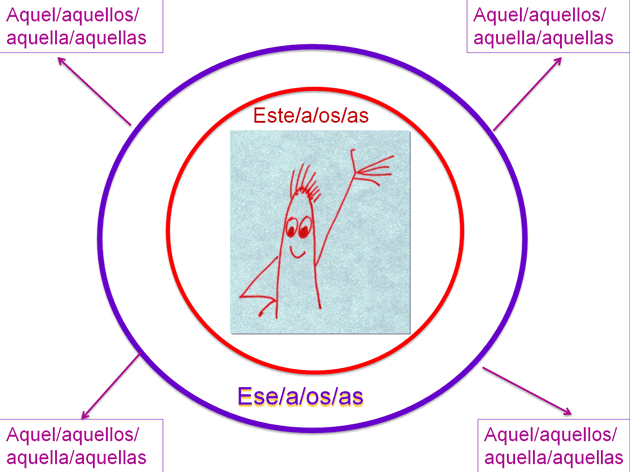In English the demonstrative adjectives are used to indicate specific items in relation to ourselves. To indicate a specific sweater that I want you to look at, I will point to the sweater and ask "What do you think of this sweater." And you might reply, "I don't like that sweater".
The words "this" and "that" are demonstrative adjectives (i.e. they demonstrate or indicate nouns.) They indicate not only a specific item or items but also where they are in relation to the speaker.
The demonstrative adjectives serve the same purpose Spanish: este suéter" this sweater" or ese suéter" that sweater".
But they are demonstrative adjectives! This means like all other adjectives in Spanish they must agree in gender and number with the nouns they modify.
Additionally, Spanish has an extra demonstrative adjective to indicate items located physically even farther away from you. In other words, Spanish has an equivalent to "this" and to "that", but also has "this or that one over there."Here are the Demonstrative Adjectives:
"This" and "These" |
Singular |
Plural |
| Masculine | este | estos |
| Feminine | esta | estas |
"That" and "Those" |
Singular |
Plural |
| Masculine | ese | esos |
| Feminine | esa | esas |
"That one over there" and "Those ones over there" |
Singular |
Plural |
| Masculine | aquel | aquellos |
| Feminine | aquella | aquellas |

- Este, esta, estos and estas are used to point out things (nouns) which are physically close to the speaker as well as to whomever he or she is speaking, usually within easy reaching distance. It corresponds to the English "this" or "these" and would be used under the same circumstances.
- Ese, esa, esos and esas are used to point out things (nouns) which are further away from the speaker (but not necessarily to the listeners), not within easy reaching distance. It corresponds to the English "that" or "those" and would be used under the same circumstances.
- Aquel, aquella, aquellos and aquellas are used to point out things (nouns) which are far away from both the speaker and the listeners, but within visual distance. It corresponds to the English "that one (way) over there" or "those ones (way) over there" and would be used under the same circumstances.
| Este suéter | This sweater |
| Estos suéteres | These sweaters |
| Ese suéter | That sweater |
| Esos suéteres | Those sweaters |
| Aquel suéter | That sweater over there |
| Aquellos suéteres | Those sweaters over there |
| Esta blusa | This blouse |
| Estas blusas | These blouses |
| Esa blusa | That blouse |
| Esas blusas | Those blouses |
| Aquella blusa | That blouse over there |
| Aquellas blusas | Those blouses over there |

